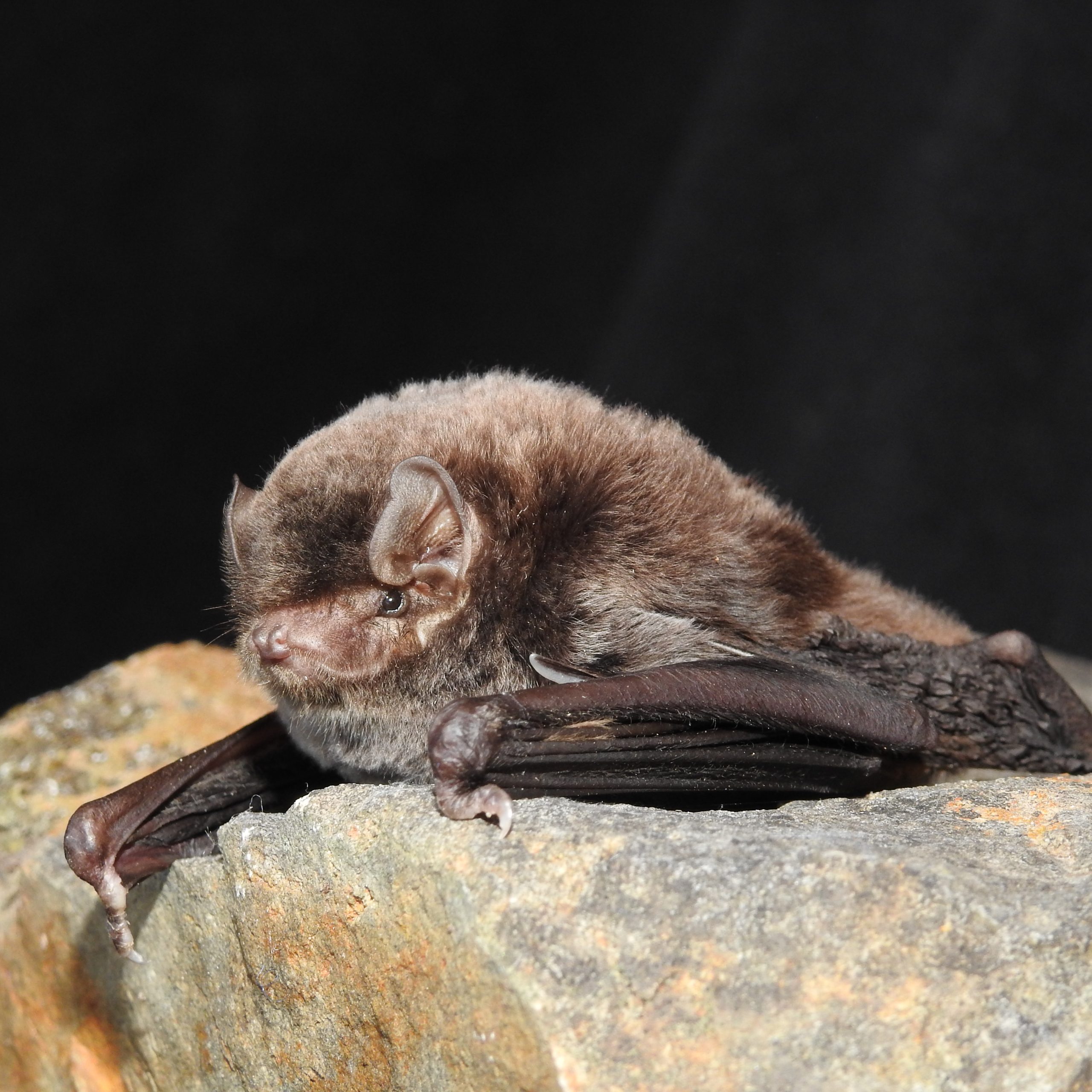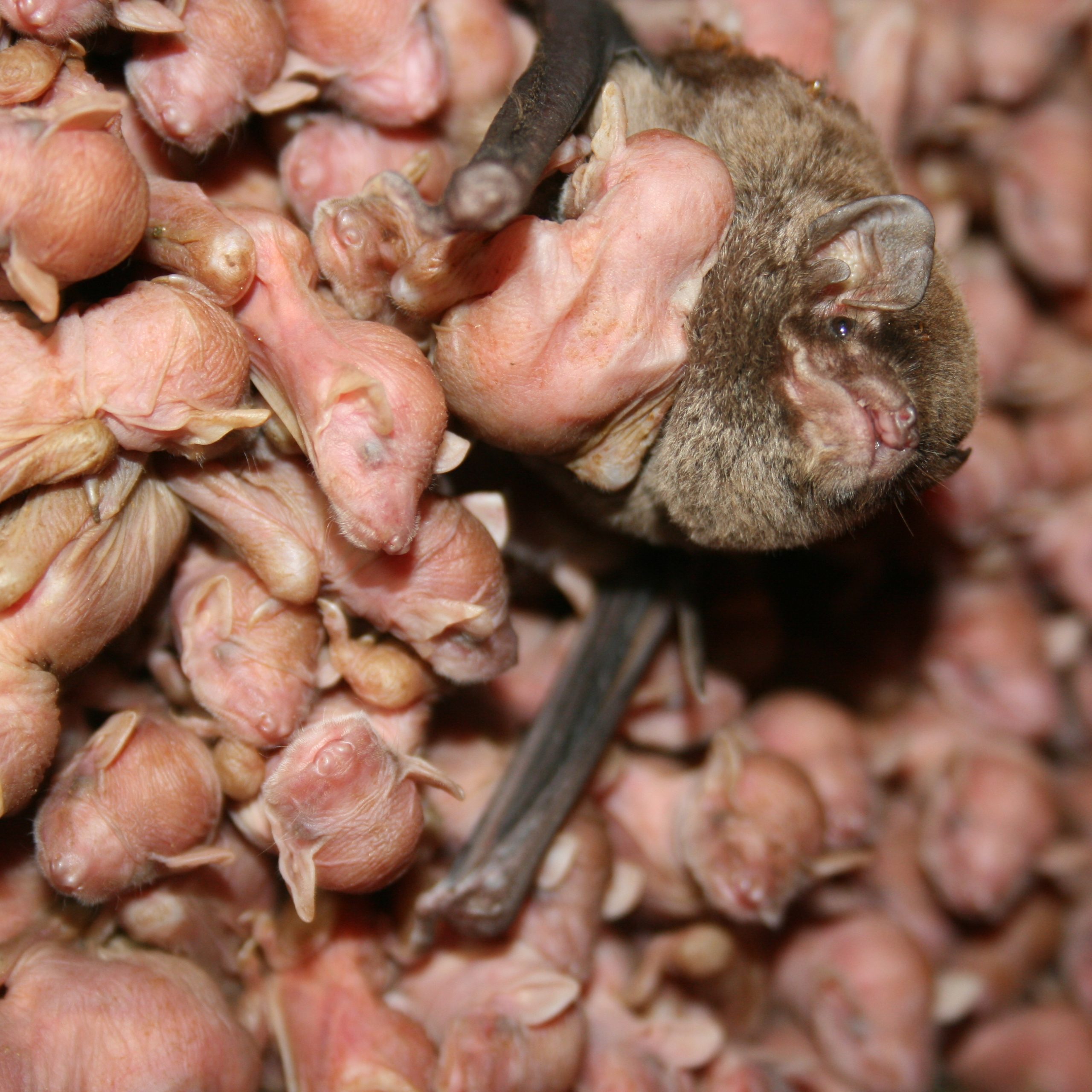Meet the Southern Bent-wing Bat, one of the most endangered species in Australia
Above image: Steve Bourne.
The Southern Bent-wing Bat is one of the third of Australila's bats that roost in caves. Image: Lindy Lumsden.

In Victoria there is a special bat that not many people know about, but which a group of dedicated scientists and land managers are working desperately to save – the Southern Bent-wing Bat.
“They’re special because they’re critically endangered and they have a very restricted distribution, which is unusual among bats,” says Dr Lindy Lumsden, Science Leader at the Victorian Government’s Arthur Rylah Institute and Chair of the Southern Bent-wing Bat Recovery Team.
“They do amazing things such as fly huge distances to find food, eat over half their body weight each night and like other small bats they’re vital for maintaining balance in ecosystems by eating insects.”
Lindy has been researching bats for almost 50 years. When she started, bats weren’t really on anyone’s radar.
“Nobody knew anything much about them,” she says. “There was no one else in Victoria working on bats at the time, so everything I was learning was new and exciting. I got hooked on them because they’re such amazing little creatures, and I am still passionate about learning more about them and protecting them.”
How do scientists count bats?
One cave is critically important for the survival of Southern Bent-wing Bats in Victoria. This cave, an undisclosed location in southwest Victoria that is owned by Trust for Nature, is one of only three known breeding sites for the Southern Bent-wing Bat.
Just getting to the cave is half the adventure, involving clambering up and down cliffs and a perilous scramble along the boulder-strewn, wave-swept coast.
“It’s a really spectacular, exposed coastline,” says Adam Merrick, Conservation Program Manager for Glenelg Hopkins at Trust for Nature. “Waves come thundering in and the weather can be really squally.”
The team set out to arrive before sunset because that’s when the bats come out. For a quarter of a century, Lindy and her team of scientists have been counting Southern Bent-wing Bats here, trying to understand how many there are, why they have declined and current trends.
Once at the cave, the scientists set up high resolution thermal imaging cameras to count the bats as they fly out to forage for the night. These days software is used to automate the counting process, a far cry from trying to hand count these zippy, 16-gram mammals in semi-darkness as scientists did twenty years ago.
Southern Bentwing Bat pups are about the size of a thumbnail. Image: Steve Bourne

“One of the most important things people can do to help these bats is not go into caves where there might be bats.”
Inside the cave it is a special place.
“There are piles of guano on the cave floor,” says Adam. “It’s a smelly, humid, unusual environment to be in.” Here the scientists use thermal and infra-red cameras to photograph the ceiling where the tiny naked pups are left in creches by their mothers.
“Counting pups that are twice the size of your little fingernail on a cave roof 45-metres above, in complete darkness, has its challenges,” Lindy says. It’s a challenge for people, but somehow the mother bats can find their own pup among hundreds of others when they return to the cave before sunrise. The counting team must be out before then, leaving the cave by two or three in the morning after spending the night underground.
Lindy’s team have shown about 18,000 Southern Bent-wing Bats use the cave, a bit under half their estimated total population which has fallen from more than 100,000 in the last 60 years. Members of the Southern Bent-wing Bat Recovery Team are trying to find out why, and the team is guiding the recovery actions.
Why do bats live in caves?
Southern Bent-wing Bats are among the third of Australian bats that roost and breed in caves. They use caves to roost during the day after foraging for insects at night. Individual bats will use a number of caves across their range, but when it comes time to give birth to a single pup in summer, the mothers choose one of three caves, including the Naracoorte Caves in South Australia, where visitors can watch them in incredible detail while they are roosting in the cave, via infra-red cameras linked to the Bat Observation Centre.
The warm, humid air in maternity caves is vital to the pups’ survival, which can’t regulate their own temperature, and the bats are extremely vulnerable to changes to this environment.
“One of the most important things people can do to help these bats is not go into caves where there might be bats,” Lindy says.
This is important any time of the year, but especially during winter when the bats enter torpor to save energy. Waking the bats up by visiting a cave causes them to use up their valuable fat reserves and if they can’t replenish this because there are fewer insects in winter, could cause them to starve to death.
Saving an endangered species
The recovery team is not yet certain why the bats are declining. Apart from disturbance, loss of feeding habitat and drought are key suspects. Scientists are keeping a sharp eye out for White-nosed Syndrome, a fungal disease that has devastated bats in North America, and could be catastrophic if it arrives in Australia. This could be spread by people entering caves with contaminated equipment from overseas.
Recent GPS tracking by Amanda Bush, as part of her PhD at Adelaide University, is revealing just how far these tiny bats travel to forage in a night – on average 35 km from their cave roosts, and sometimes up to an amazing 85 km. That’s important information because knowing where the bats forage will help organisations like Trust for Nature protect and restore their remaining habitat on private land in Victoria.
“Southern Bent-wing Bats are one of our priority species in south west Victoria, where much native habitat has been lost, degraded and fragmented like elsewhere in the state. Information gathered by the scientists will help us work with landholders to protect habitat for the bats,” says Adam.
Trust for Nature has been improving the cave site through fencing to remove cattle, replacing covers in the cave roof to keep the environment stable, and restoring vegetation on the property, which Adam hopes will provide habitat where the bats can forage near to their maternity site.
For now at least this remarkable species has a secure place to raise the next generation, and scientists are learning more about how to protect the Southern Bent-wing Bat all the time.
Read more stories from our latest Conservation Bulletin
The Southern Bent-wing Bat National Recovery Team is made up of members from the Arthur Rylah Institute for Environmental Research, Australian Speleological Federation, Department of Agriculture, Water and the Environment (Australian Government), Department of Environment and Water (South Australia), Department of Energy, Environment and Climate Action (Victoria), South Australian Museum, Limestone Coast Landscape Board, Glenelg Hopkins CMA, Naracoorte Caves National Park, Nature Glenelg Trust, The University of Adelaide, The University of Melbourne, Wildlife Health Australia and Zoos Victoria.